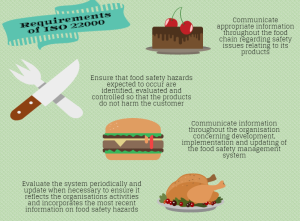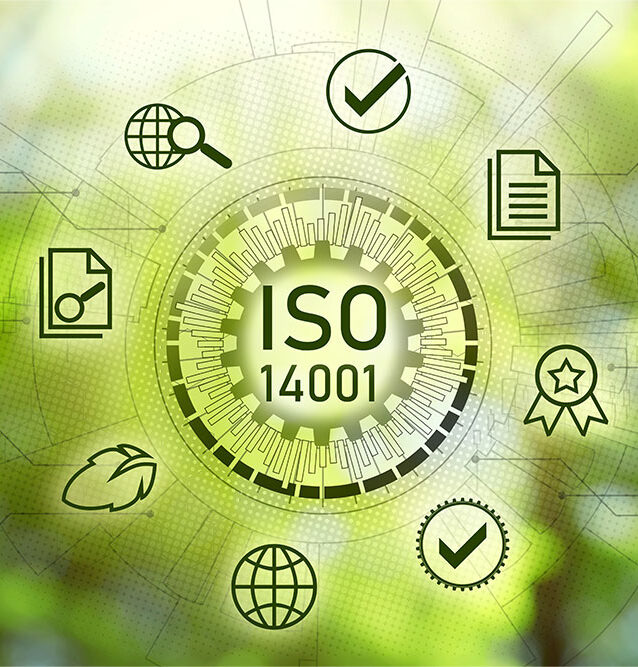ISO 22000:2005 is the family of international standards that governs food safety management.
This family of standards includes:
- ISO 22000:2005 – Overall guidelines for food safety and management.
- ISO 22004:2014 – Provides generic advice on the application of ISO 22000.
- ISO 22005:2007 – Focuses on traceability of feed and in the food chain.
- ISO/TS 22002-1:2009 – Contains specific prerequisites for food manufacturing.
- ISO/TS 22002-3:2011 – Contains specific prerequisites for farming.
- ISO/TS 22003:2007 – Provides guidelines for audit and certification bodies.
ISO 22000 outlines the requirements for a food safety management system. It maps out what an organization needs to do to demonstrate its ability to control food safety hazards in order to ensure that food is safe at the time of human consumption.
This standard is applicable to organisations, that are involved in any aspect of the food chain and who want to implement systems that consistently provide safe products, regardless of their size.
Requirements of the standard include:

Some of the benefits associated with the standard include:

There have been high adoption rates of ISO 22000 since its inception in 2005.

The highest adoption rates have been in China, India and Greece. China has remained steady in its implementation of various standards and it tops the leader board for the number of certificates issued to ISO 22000 in 2013.
Additionally, there were only 42 ISO 22000 certificates issued in Ireland and 82 issued in the United Kingdom.

In the next part we will discuss why companies may not seek certification.
Sources:
ISO 22000 Overview: http://www.iso.org/iso/home/standards/management-standards/iso22000.htm
ISO 22000:2005 International Standard
BSI : http://www.bsigroup.com/en-GB/iso-22000-food-safety/
ISO Special Report on steps to implement ISO 22000: www.iso.org/iso/livelinkgetfile-isocs?nodeid=15020097
ISO Survey: http://www.iso.org/iso/iso_survey_executive-summary.pdf?v2013
Benefits: http://www.iso.org/iso/home/standards/benefitsofstandards.htm







